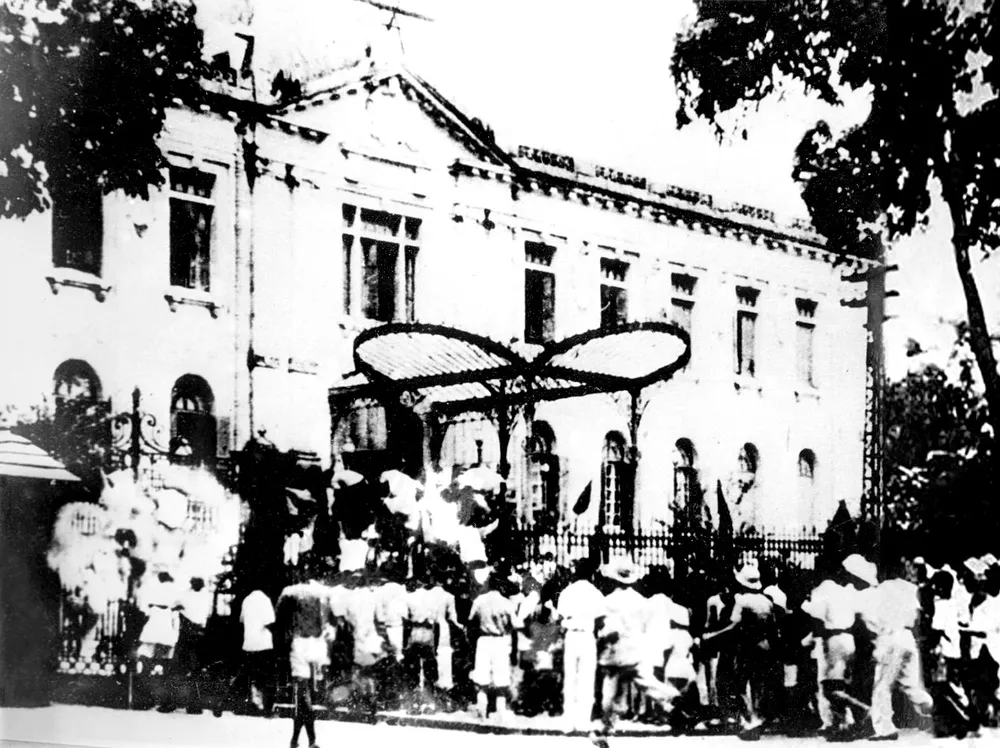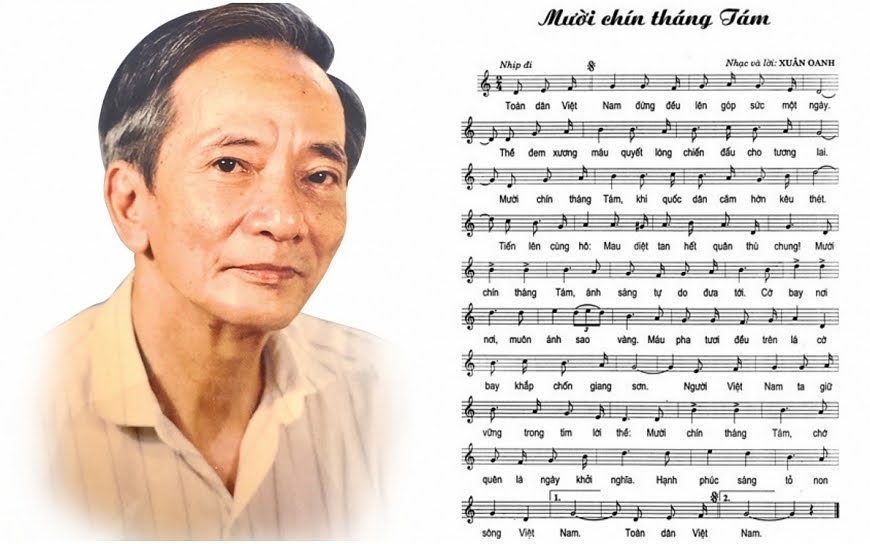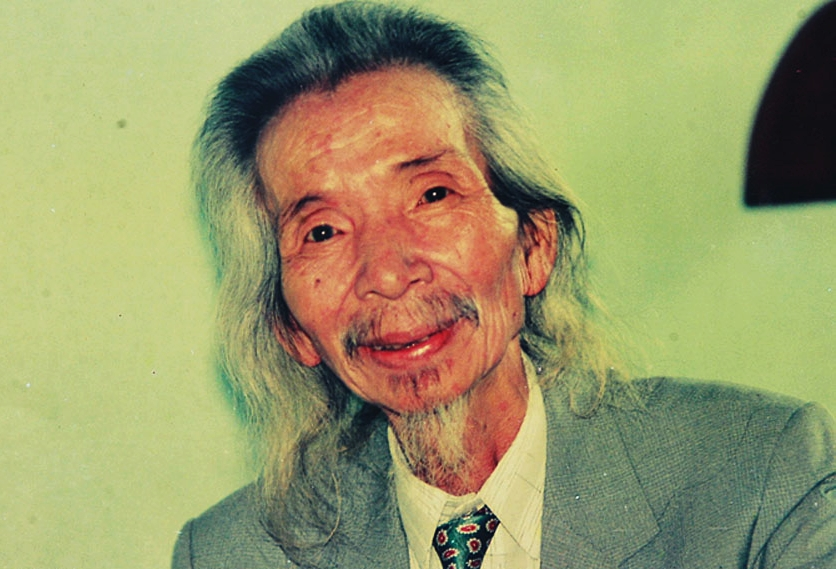On the morning of August 19, 1945, Hanoi’s Grand Opera House Square was transformed into a grand stage of revolution. Tens of thousands of people flooded the plaza, not in silence but in song. It was as if history itself had found a melody. Song writer and art critic Nguyễn Thuỵ Kha writes, “the people’s singing began a revolution that shook heaven and earth.”
In that electrifying moment, the usual tools of insurrection - speeches, banners, fervent crowds - were accompanied by something fundamentally cultural and emotional: music. The uprising of August 19 in Hanoi was not only a political turning point. It was a musical awakening, a day when voices united to write history in song.
Many expats living in Vietnam know the celebratory boom of National Day on September 2. Fewer may recognize August 19, 1945 - the day ordinary Vietnamese seized control of their destiny in Hanoi - or realize how central music was to that moment. Yet if you wander the streets of Hanoi each August, you’ll still hear echoes of those anthems on public loudspeakers and in commemorations.

These are not just old marching tunes, but the living memory of revolution, the soundtrack of a people’s uprising. The lesson is clear: history is written not only in academic texts and faded documents, but also in the songs and sounds that carry a people’s spirit from one generation to the next.
“Mười Chín Tháng Tám”: The Revolution’s Own Song
At dawn on that historic day, Hanoians from all walks of life poured toward the Opera House. They formed a massive rally. They came from Hanoi's surrounding villages, carrying the red flag with its yellow star - and they came singing. Marching bands and impromptu choirs alike struck up revolutionary songs that everyone seemed to know by heart.
The music became a tool of mass mobilization, binding the crowd into one purpose - revolution.
Most remarkable of all was a song born from the uprising itself. As the historic morning unfolded, a 22-year-old musician named Xuân Oanh found himself amid the sea of demonstrators marching from the outskirts to the city center. Swept up in the energy of the moment, Xuân Oanh literally began composing a new march on the spot - a song to celebrate the victory that was just then being won. He grabbed a scrap of paper (the foil of a cigarette pack) to jot down lyrics as they came. “Toàn dân Việt Nam đứng đều lên góp sức một ngày, thề đem xương máu quyết lòng chiến đấu cho tương lai…” (“All the people of Vietnam, rise up together this day, swear with our blood and bones to fight wholeheartedly for our future…”)
He later recalled: “As if sensing that the historic moment to break the chains of slavery had arrived, the first verse rang out in my heart, and I began to sing. [...] As soon as I thought of a line, I sang it out loud for everyone to sing along. By the time we reached the square in front of the Hanoi Opera House, the song was complete. It was published by a publishing house in Chợ Hôm, recorded, and played continuously on the radio.”

Line by line, Xuân Oanh’s fellow marchers took up the song, humming and singing along as the procession advanced toward the Opera House. By the time the crowd reached the square, the song - now titled “Mười Chín Tháng Tám” (“August 19th”) - was complete and being belted out by thousands of voices.
The cultural significance of “Mười Chín Tháng Tám” is profound. It literally carries the date of the revolution in its name, ensuring that no one could ever forget the anniversary. In just 102 words of lyrics, Xuân Oanh distilled the essence of that day. By that very afternoon, a local publisher in Chợ Hôm had rushed the composition into print, and the chorus was echoing not just in Hanoi but in nearby provinces. The song would eventually become the fastest-spreading song in Vietnamese musical history.
Within two weeks, when President Hồ Chí Minh stood in Ba Đình Square to proclaim Vietnam’s independence on September 2, the Voice of Vietnam radio played Mười Chín Tháng Tám repeatedly, letting its jubilant notes soar alongside the reading of the Declaration. A new country was being born to music.
Melody of Defiance: “Diệt Phát Xít”
Behind this sonic revolution stood remarkable figures who understood that conquest of the mind precedes conquest of territory. Nguyễn Đình Thi, the revolutionary artist who had radicalized Xuân Oanh, was conducting "Diệt Phát Xít" (Annihilate Fascist) on that same historic day. Diệt Phát Xít’s lyrics were forged by suffering, especially the Great Famine of 1945, when over 2 million Vietnamese perished under Japanese occupation and French neglect.
Nguyễn Đình Thi poured that outrage into words: “Việt Nam, bao năm ròng rên xiết lầm than… Loài phát xít cướp thóc lúa, cướp đời sống dân mình… Đồng bào tuốt gươm vùng lên / Đã đến ngày trả mối thù chung!” (“Vietnam, so many years moaning in misery… the fascists steal our rice, steal our lives… Compatriots draw swords and rise up / The day has come to settle the common score!”)
These were fighting lyrics, and on August 19 the people were ready to answer their call.
Two days before the uprising, during a mass meeting right at the Opera House, Diệt Phát Xít had made a dramatic debut. After a group performance of Tiến quân ca, a young man stepped forward to a makeshift microphone and began to sing Diệt Phát Xít with unbridled fervor, according to songwriter Dân Huyền.
His solo voice soon became a chorus as the crowd joined in. It was indeed an emotional awakening in real time. Sensing the song’s power, organizers hurried to print copies of the lyrics overnight for wider distribution. In that moment, music and action became one. The people were not just singing about annihilating fascists. They were in the streets actually toppling a regime. Little wonder that soon after, Vietnam’s provisional government chose Diệt Phát Xít as the opening theme for its national radio broadcast - Voice of Vietnam.
The Revolution's Soundtrack
The story of Vietnam's revolutionary victory cannot be told without understanding how music became the revolution's most powerful weapon. For decades before that fateful August day, the Việt Minh had been conducting what might be called the world's longest musical rehearsal for independence. Songs weren't mere entertainment or propaganda. They were the DNA of resistance, embedding revolutionary consciousness into the collective Vietnamese soul.
Among the anthems echoing the spirit of August 19th was “Cùng nhau đi Hồng binh” (“Let’s Go Red Soldiers”). This rousing march, written in 1930 by Đinh Nhu, had once rallied early anti-colonial fighters. On August 19 it found new life. Groups of youth and workers raised their voices to its defiant verse: “Cùng nhau đi Hồng binh / Đồng tâm ta đều bước / Đừng cho quân thù thoát / Ta quyết chí hy sinh…” (“All together, let’s join the Red soldiers, united in step / Let not a single enemy escape, we are determined to sacrifice…”)
The cultural significance of this song was enormous. It linked the 1945 uprising to 15 years of earlier struggles. It was history and hope rolled into one thundering chorus. Hearing those words, Hanoian revolutionaries felt the past and future fuse in their own voices, as if “red” seniors from the Nghệ Tĩnh uprisings of 1930 were marching alongside them.

Another song thundering through the crowd was “Tiến quân ca” (“The Marching Song”). Composed just a few months earlier by a young Văn Cao, Tiến quân ca had been adopted as the official anthem of the Việt Minh Front only days before. On August 19, its bold melody - the same that later became Vietnam’s national anthem - rang out on every street.
People knew its lyrics by heart: “Đoàn quân Việt Nam đi…” (“Armies of Vietnam march…”) - words that urged the downtrodden to stand up as soldiers of a free nation. The cultural impact of “Tiến quân ca” cannot be overstated. It gave the crowd a collective identity as citizen-soldiers of Vietnam. It gave the revolution a voice that literally would become the nation’s voice.
On that August day in 1945, an entire people found their voice - literally and figuratively. Their songs stirred a nation and helped catalyze a revolution. Eight decades later, the echo of those songs still vibrates in Hanoi’s streets, a living reminder that freedom’s story is set to music. The chorus that began on August 19 has never truly fallen silent. It plays on in the national memory, proving that history, at its deepest level, is a song carried in the hearts of the people who lived it.
And that song - the song of freedom - will continue to be sung.
